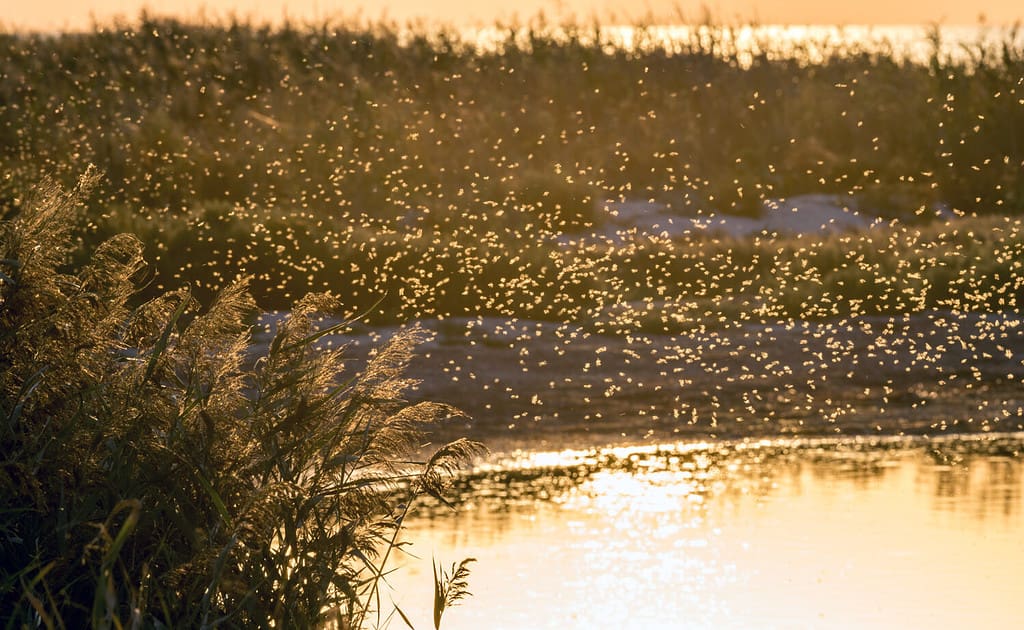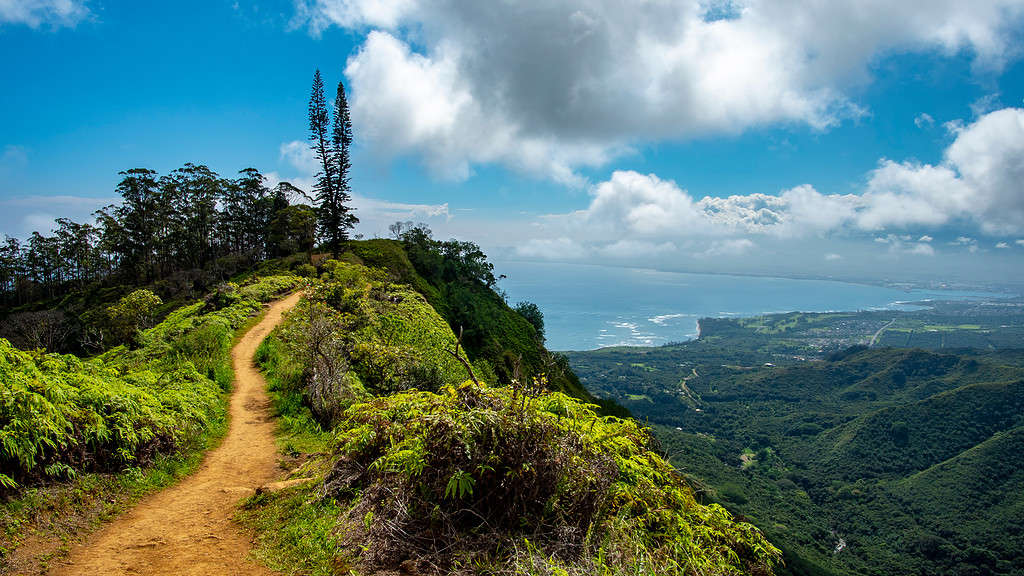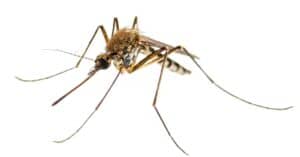As someone who’s visited or lived in Alaska, you may have noticed the abundance of mosquitoes in the state. It’s not just your imagination; Alaska is home to 35 species of mosquitoes, more than any other state in the US. But what makes Alaska so attractive to these pesky insects? In this blog post, we’ll explore the factors that contribute to the thriving mosquito population in Alaska and discuss the implications of this for residents and visitors alike.
Before we dive into why mosquitoes thrive in Alaska, let’s first inspect the climate and environment of the state, as well as the mosquito life cycle.
Alaska’s Climate and Environment
Alaska is the largest state in the US, with a land area of over 663,000 square miles. The state’s climate varies widely, with the northern regions being characterized by long, cold winters and short, cool summers, while the southern regions have a more temperate climate. Alaska’s diverse terrain has vast forests, tundra, mountains, and coastline.
Mosquito Life Cycle

There are four stages to the life cycle of a mosquito.
©VladKK/Shutterstock.com
The life cycle of a mosquito comprises four stages: egg, larva, pupa, and adult. The eggs are laid in water or damp soil by the female mosquito. When the eggs hatch, the larvae emerge and feed on organic matter in the water. After several molts, the larvae turn into pupae, which do not feed but undergo metamorphosis to become adult mosquitoes. The life cycle duration depends on the species and environmental conditions, ranging from 10 days to several weeks.
Factors Contributing to Mosquito Population Growth in Alaska
Now that we have a basic understanding of Alaska’s climate and the mosquito life cycle, let’s explore the factors that make Alaska such a mosquito-friendly environment.
Abundant Freshwater Sources
Contrary to what one might expect, Alaska has many freshwater sources, such as lakes, rivers, marshes, and wetlands. These water sources serve as breeding grounds for mosquitoes who rely on standing water to lay their eggs and develop. With about 3 million lakes and 12,000 rivers and streams, Alaska provides plenty of opportunities for mosquito larvae to thrive.
Ideal Temperature Range
Mosquitoes thrive in temperatures between 50 and 80 degrees Fahrenheit, and Alaska’s climate suits their needs well. During the summer months, temperatures in Alaska can reach the 70s and 80s, providing optimal conditions for mosquito breeding and activity.
Presence of Predators and Competitors
While it may seem counterintuitive, predators and competitors can contribute to mosquito population growth. Many species that prey on mosquitoes, such as birds, bats, and dragonflies, are migratory and only spend part of the year in Alaska. Additionally, competition for resources such as food and breeding sites can be low in Alaska, allowing mosquito populations to grow unchecked.
Global Warming and Climate Change
As the planet’s climate changes, so do the conditions contributing to mosquito population growth. Warmer temperatures and increased precipitation can create more breeding sites for mosquitoes, allowing them to reproduce more rapidly. Some mosquito species may expand their range northward as the climate warms, bringing them into areas where they were previously not found.
Human Impact on the Environment
Human activities such as logging, mining, and construction can alter the landscape in ways that favor mosquito populations. For example, clear-cutting forests can create new breeding sites for mosquitoes, while damming rivers and building roads can disrupt natural water flows and create standing water.
The Role of Mosquitoes in Alaska’s Ecosystem

Birds use mosquitoes as a food source, and in Alaska, swallows are one of the more common birds to do so.
©Sigur/Shutterstock.com
While mosquitoes may be a nuisance to humans, they also play an important role in Alaska’s ecosystem. Here are some different roles mosquitoes play in Alaska’s environment.
Mosquitoes as a Food Source
Many species of birds and bats rely on mosquitoes as a primary food source. For example, the common nighthawk, a migratory bird that spends summers in Alaska, can consume up to 500 mosquitoes in one hour of feeding. Mosquito larvae are also an important food source for fish and other aquatic animals.
Mosquitoes’ Impact on Plant Life
Believe it or not, mosquitoes can also positively impact plant life in Alaska. When female mosquitoes feed on the blood of mammals, they also ingest iron-rich blood that they use to develop their eggs. When the mosquitoes lay their eggs in water, the iron-rich waste products they excrete can act as a fertilizer for plants growing in the water.
Mosquito-Borne Diseases and Their Effects on Wildlife and Humans
While mosquitoes play an essential role in the food web of Alaska’s ecosystem, they can also negatively impact wildlife and humans. Mosquito-borne diseases such as West Nile virus and Eastern equine encephalitis have been detected in Alaska, and while human cases are rare, they do occur. Additionally, mosquitoes can transmit diseases to wildlife such as caribou, moose, and bison, which can significantly impact their populations.
The Importance of Managing Mosquito Populations

The mosquito, jokingly referred to as the Alaska state bird, is a prevalent and often frustrating part of the summertime experience in the state.
©Carlo Emanuele Barbi/Shutterstock.com
Given mosquitoes’ important role in the ecosystem, managing their populations to balance their ecological significance with the needs of humans and other animals is essential. Mosquito control methods include chemical, biological, and physical processes and integrated mosquito management (IMM), which combine multiple strategies for the most effective control.
Chemical control methods involve using pesticides to kill adult mosquitoes or prevent larvae from developing. While effective, these methods can have negative impacts on non-target species and may not be sustainable in the long term.
Biological control methods involve using natural predators or parasites to control mosquito populations. For example, introducing fish species that feed on mosquito larvae into bodies of water can effectively control mosquito populations. However, these methods can be challenging to implement and may not be effective for all mosquito species.
Physical control methods involve using barriers such as screens or mosquito nets to prevent mosquitoes from entering homes or outdoor spaces. While effective, these methods may not be practical for larger areas or outdoor activities such as camping and hiking.
IMM combines control methods to achieve the most effective and sustainable mosquito control. Depending on the specific circumstances, this approach may involve chemical control methods and physical or biological methods.
Mosquitoes in Alaska: Common Species and Characteristics

One of the more common mosquitoes in Alaska and in general is
Culex pipiens, the common house mosquito.
©Anest/Shutterstock.com
Thirty-five kinds of mosquitoes live in Alaska, each featuring its own distinct characteristics and behaviors. The most common species found in Alaska include the Aedes communis, the Anopheles punctipennis, and the Culex pipiens.
The Aedes communis, also known as the snow mosquito, is found throughout Alaska and is active during summer. This unique species can survive and breed in snowmelt pools, allowing it to emerge earlier in the season than other mosquito species.
The Anopheles punctipennis is found in areas with standing water, such as marshes and wetlands. This species is a known carrier of West Nile virus and other mosquito-borne diseases.
The Culex pipiens is active throughout Alaska from May to September. This species also carries the West Nile virus and other mosquito-borne diseases.
With so many species, it’s important to understand the behavior, characteristics, and habitats of mosquitoes in Alaska. Knowing this information can help protect you from mosquito-borne diseases and effectively manage their populations.
What States Have the Least Mosquitoes?

An environment like Hawaii’s ensures a lower population of mosquitoes.
©Cody A Seymour/Shutterstock.com
Because of their environment, states like Hawaii, West Virginia, Delaware, and Nevada have a lower mosquito population. The two smallest states, Delaware and Rhode Island, are thought to have the least mosquitoes in the country. The Western and Northern states, including Michigan, Nevada, Washington, and Oregon, mainly have fewer mosquitoes.
Logically, states with arid climates have lower numbers of mosquitoes, as these insects tend to thrive in areas with water. Southern California, a desert region with high temperatures and limited water supply, has the fewest mosquitoes among the states in the USA.
Conclusion
Mosquitoes are vital to Alaska’s ecosystem but can also pose a risk to wildlife and humans. By managing mosquito populations through integrated mosquito management (IMM) techniques, we can balance the needs of both people and animals while still protecting the environment.
The most effective IMM strategies may combine chemical control methods with physical or biological methods. With the right approach, we can maintain healthy and balanced mosquito populations in Alaska while protecting people from potential risks posed by these insects.
The photo featured at the top of this post is © iStock.com/Kwangmoozaa
Thank you for reading! Have some feedback for us? Contact the AZ Animals editorial team.






